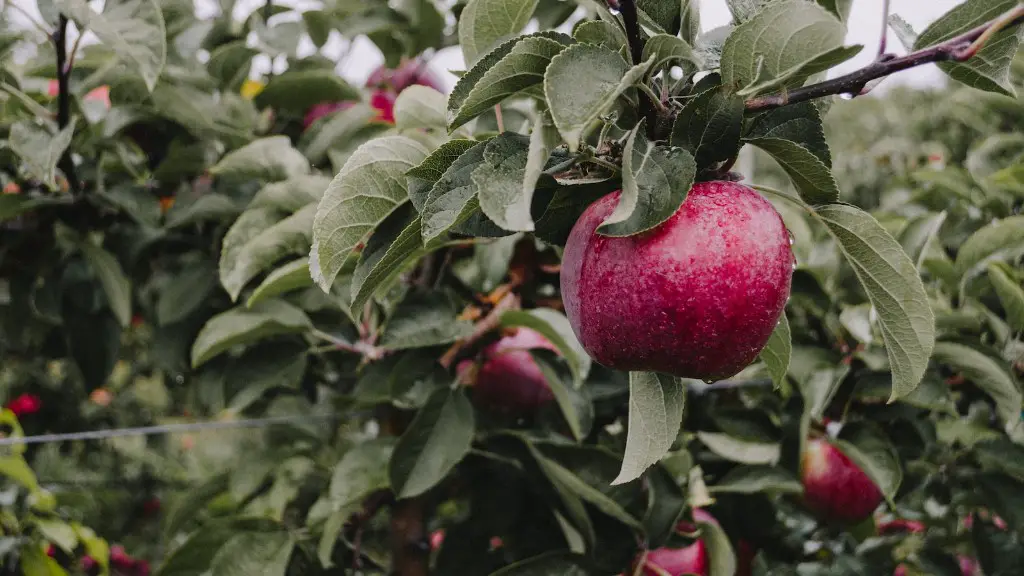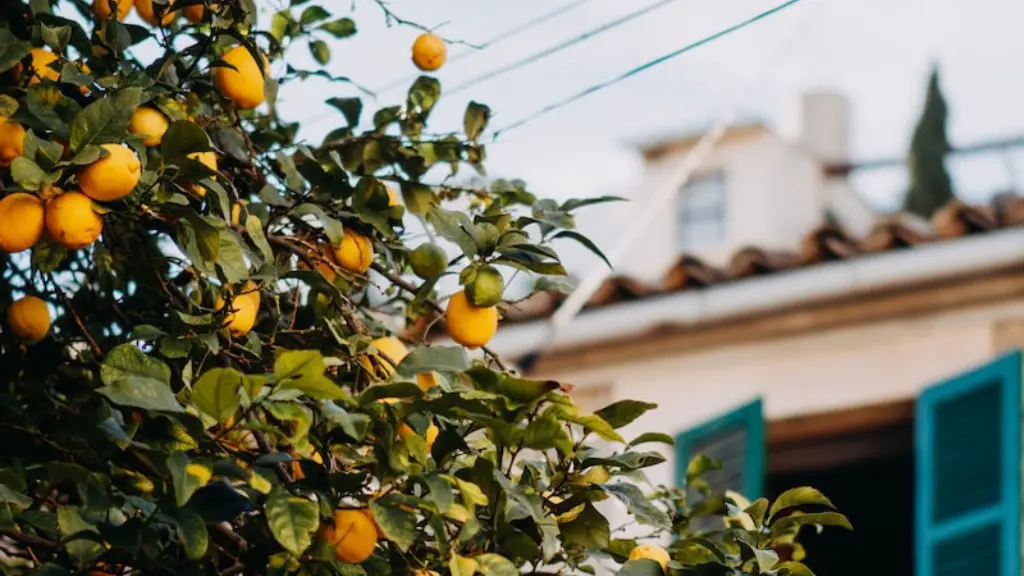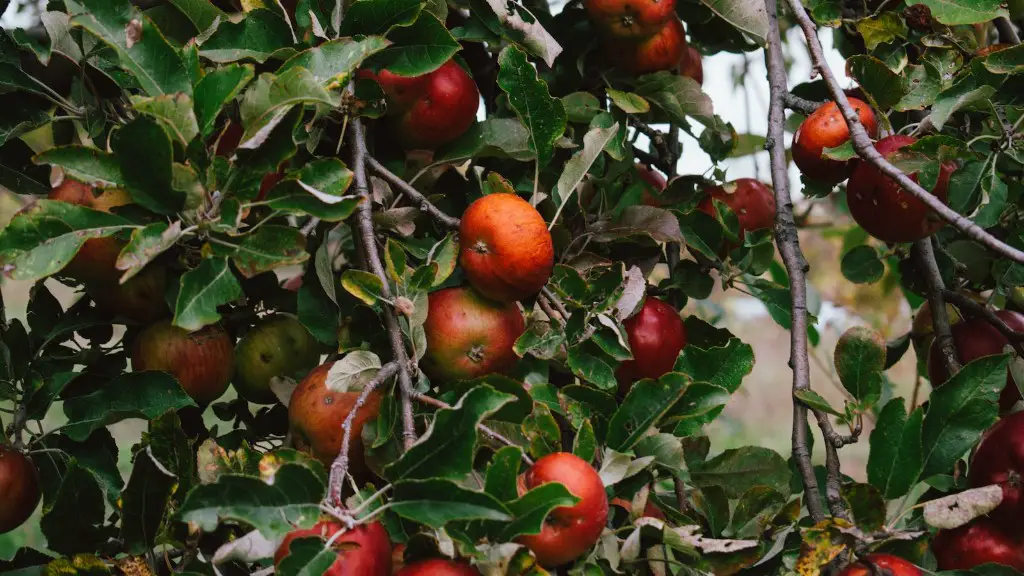Placement
Ponytail Palm trees, also known as Beaucarnea recurvata or ‘Elephant’s Foot’, are native to Mexico. Unlike other houseplants, the Ponytail Palms thrive best in bright, direct sunlight. Keeping the plant in an area with plenty of natural light will help enhance the beauty of this unique plant. If the plant must be kept indoors, place it near a window that receives plenty of sunlight.
When selecting a pot for the Ponytail Palm, make sure to pick one that is wide and shallow — such as an unglazed ceramic pot — so excess water can easily drain away. If a deeper pot is used, be sure to add a layer of large stones or pebbles at the bottom to help with drainage.
Watering
The Ponytail Palm is a very hardy plant, which means it can survive long periods of time without much water. During the summer months, the soil should be allowed to dry between waterings. However, during the winter months, the soil should be allowed to dry out almost completely before being watered again. Ponytail Palms are sensitive to getting overwatered, so be sure test the soil’s moisture level before watering to prevent this from happening.
It’s also important to note that the leaves of the Ponytail Palm can store water, which helps them survive dry spells. Note that if the leaves become yellowish-green, this is an indication that the plant isn’t getting enough water. If this happens, give the soil a good soak and then allow it to dry out completely between waterings.
Fertilizing
The Ponytail Palm does not require much fertilizer. High levels of fertilizer can damage the delicate roots. During the growing season, but no more than twice every month, add a weak solution of a liquid fertilizer to the soil and then water thoroughly.
During the winter months, the fertilizer can be discontinued entirely.
Prune Away Dead Leaves and Stems
Ponytail Palm trees tend to get leggy as they grow, which means that the lower leaves begin to die and the stems become bare. To combat this, simply prune away the dead leaves and stems – be sure to cut at the base of the plant.
It’s also important to note that if the leaves of the Ponytail Palm become discolored, this could be a sign of insect damage. Treat the plant with an insecticidal soap to help get rid of any unwanted pests.
Repotting
Because Ponytail Palms produce long stems, they require repotting every two to three years. When repotting the Palm, jump one or two pot sizes up. Also, be sure to add a fresh layer of potting mix to the pot — this will help replenish any lost nutrients in the soil.
Once the plant is settled in the new pot, give it plenty of bright, direct sunlight and water when the top inch of soil is dry.
Protect From Cold Temperatures
The Ponytail Palm should be kept away from cold temperatures. These plants require warmth and humidity, which means they should be kept indoors during the cold winter months — especially if the temperature is below 55°F. If kept in cool, drafty areas, these plants may become susceptible to various diseases.
Propagating Ponytail Palms
It is possible to propagate a Ponytail Palm from cuttings. In order to do this, carefully remove a stem or leaf from a mature plant and place it in moist potting soil. Be sure to keep the soil moist until the roots begin to form, then water it sparingly.
Once the cutting begins to show signs of growth — such as a new leaf or stem — it can be moved to a larger pot with fresh potting soil.
Potential Diseases and Pests
Like any other houseplant, Ponytail Palms can become susceptible to a variety of diseases and pests. To protect the plant from potential diseases and pests, keep the leaves and stems clean and make sure not to over water it.
If the palm does become infected with a disease, treat it with a combination of insecticidal soap and neem oil. For more severe infections, contact a professional for assistance.
Provide Support for Taller Stems
When Ponytail Palms get taller, it is important to provide support for the stems. The stems of the palm can become heavy as they mature, which can lead to them drooping over. To provide support, simply place a stake in the soil and tie the palm to it. If this isn’t done, the weight of the palm could cause it to topple over and lead to damage.
Transplant Wisely
When transplanting a Ponytail Palm, the main goal is to protect the root system. When the palm is removed from its pot, be sure to handle the root system very carefully and avoid disturbing it too much.
Also, make sure to water the newly transplanted palm sparingly until the root system is firmly established in the new pot. Watering too much too soon can cause damage to the root system and lead to stunted growth.
Ease Up on Fertilizers
It is important to use the right type of fertilizer for Ponytail Palms. Over fertilizing the palm can cause nutrient burn, which can stunt its growth and lead to discolored leaves. High levels of fertilizer can also cause the leaf tips to die off and lead to root rot.
If fertilizing is necessary, use a mild organic fertilizer and use it sparingly.
Check for Insect Damage
Insects such as mealy bugs, spider mites, and scale insects can cause damage to Ponytail Palms. Periodically check the plant for signs of insect damage – such as discoloration, wilting leaves, or spots on the leaves.
If signs of insect damage are found, treat the plant with an insecticidal soap. This will help get rid of any unwanted pests and help keep the palm healthy and looking its best.
Remove Yellow and Droopy Leaves
If the leaves of the Ponytail Palm begin to turn yellow or droop, this could be an indication that the palm is not getting the proper care it needs. In these cases, it is best to remove the yellow and droopy leaves to encourage healthier, new growth.
By removing these leaves, the Ponytail Palm will be able to focus its energy on producing healthy new leaves that are full of life. This will help keep the palm looking its best and promote healthy growth.
Direct Sunlight
Because Ponytail Palms thrive in sunlight, it is important to give them plenty of bright, direct sunlight. These palms are not cold-hardy, so be sure to keep them away from cold temperatures and drafts.
If kept in an area with plenty of natural light, the Ponytail Palm can easily be kept healthy and looking beautiful.
Humidity Levels
Ponytail Palms require a relatively high level of humidity to thrive. If the humidity level is too low, the palm may become susceptible to various diseases.
To increase the humidity levels in the home, consider getting a humidifier or simply place the plant near a sunny window with a shallow tray of water underneath it. This will help the plant get the humidity it needs to stay healthy and strong.
Toxin Control
Like many other plants, the Ponytail Palm can produce harmful toxins in its leaves. These toxins can be harmful to pets and children, so be sure to keep them away from the plant.
The best way to control toxins is to regularly check the plant for signs of insect damage and remove any dead leaves or stems. This will help keep the plant healthy and free of toxins.




